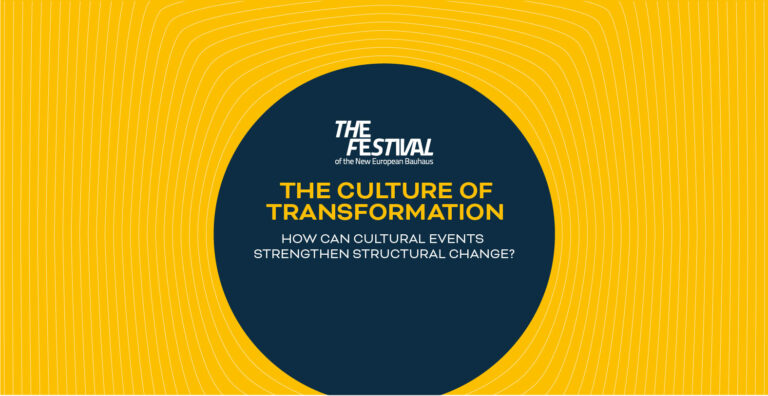
The Festival of the New European Bauhaus | Side Event June 10th 2022 in Saxony-Anhalt
The Culture of Transformation –
How can cultural events strengthen structural change?
Together they succeeded in calling for legislation to transform energy-intensive industries and to contribute to climate neutrality of Europe. The change began to take shape in 2022 when the Anhalt University of Applied Sciences with its departments of architecture and design, the Bauhaus Foundation in Dessau, the Burg Giebichenstein, University of Art and Design Halle, the Martin-Luther-University in Halle as well as network partners SALEG, the Forum Rathenau at the coal-fired power plant in Zschornewitz, research Institutes of the Fraunhofer Gesellschaft, and the city of Zeitz merged their forces and initiate the NEB -“Das Sachsen-Anhalt Projekt”, together with the citizens from the region. Its uniqueness was the synthesis of different types of knowledge coming from various actors which guided the project in overcoming the boundaries of separate disciplines and was achieved by naturally integrating art, architecture, science, technology and craftsmanship.
What has happened to the city of Zeitz, where the development of scenarios and prototypes started? Zeitz has been connected to the fast S-Bahn network since 2038. Trains to Leipzig and Gera operate every ten minutes. Today, the population has doubled since the 2020s to 60,643.
When the question of a New European Bauhaus is raised today, Saxony-Anhalt and Dessau are addressed, together with the Bauhaus Foundation in Dessau, the Anhalt University of Applied Sciences with its departments of architecture and design, Burg Giebichenstein, University of Art and Design and the Martin-Luther-University in Halle as well as network partners SALEG, the Forum Rathenau at the former coal-fired power plant in Zschornewitz, the Fraunhofer Gesellschaft and the city of Zeitz. Together, they build the Saxony-Anhalt Project.
The project idea has been inspired by the Fibonacci Sequence as it is based on a growing network which links global matters to individual projects reaching out from Saxony-Anhalt to other European regions. It comprises educational, creative, spatial and urban practices and aims at designing as a social task – to be “accessible and inclusive for all.” (NEB)
For almost 150 years, the Central German lignite mining region was one of the most important deposits of fossil fuels. Coal led to the radical transformation of a formerly rural landscape – this connects with other lignite mining regions of the world. It has shaped people, work, living together and communities.
In the face of climate change, the coal phase-out is becoming inevitable. How can ecological and social transformation succeed? It essentially becomes a cultural one. In order to address successfully the climate emergency, it is key “to develop narratives and frameworks that can touch people and help inspire us to move toward climate neutral living.” (NEB) It takes more than the management of post-mining landscapes and brownfield sites, the development of new energy sources and environment-friendly industries. A radical cultural shift toward sustainable ways of living is needed to achieve an ecologically and socially just world.
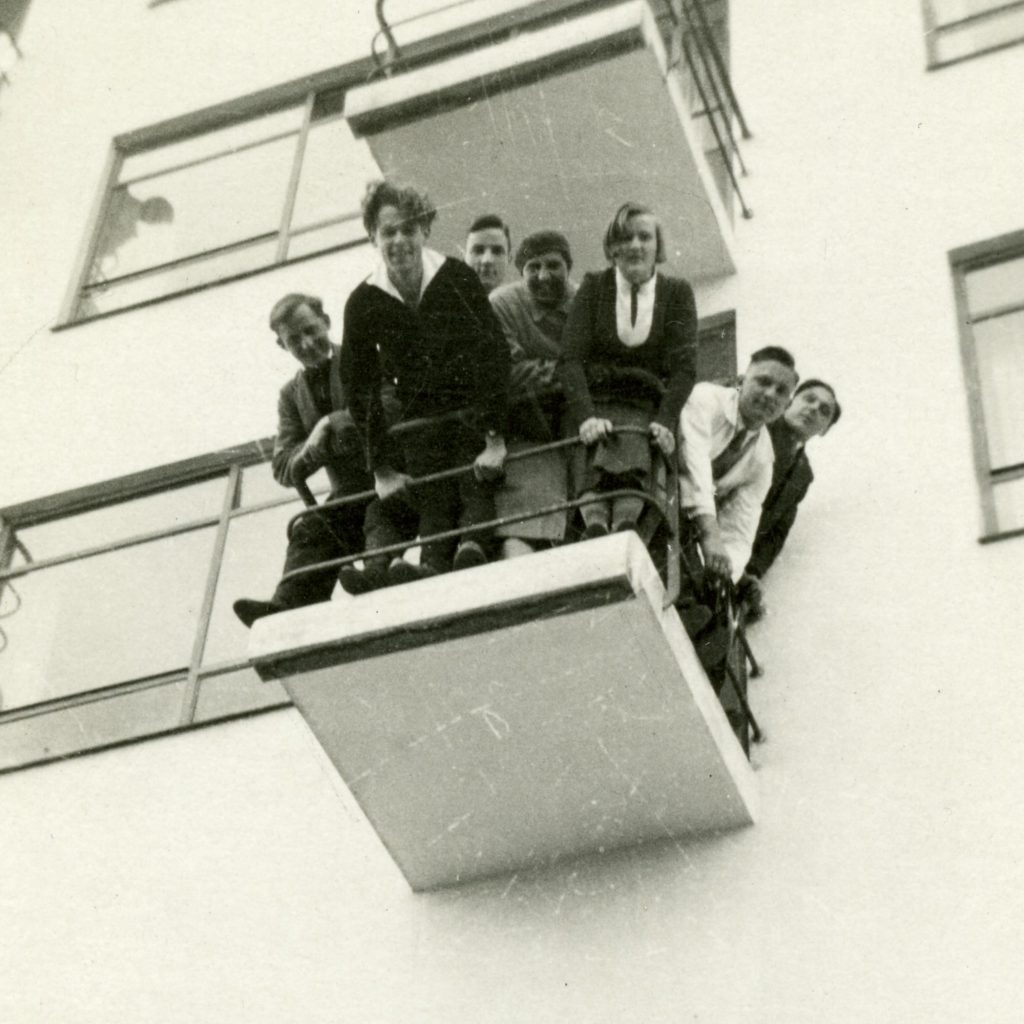
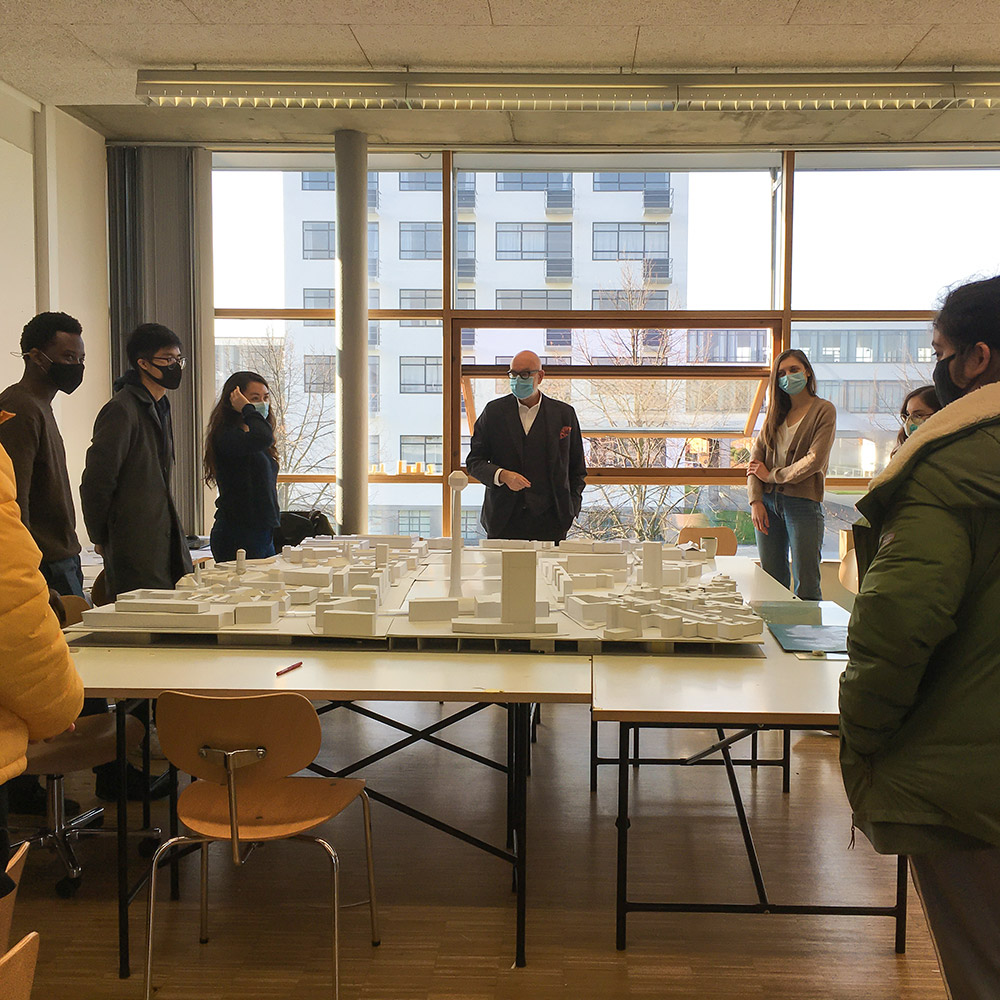

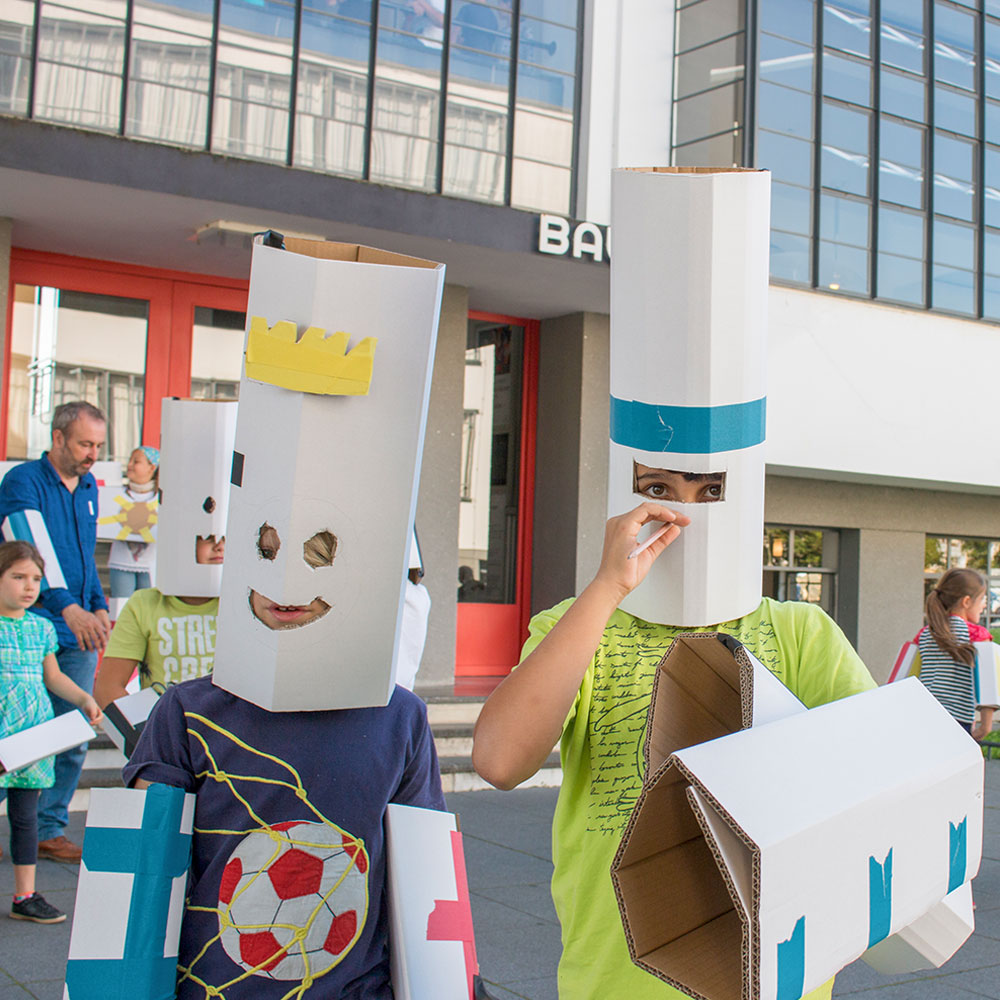
If the historic Bauhaus in Dessau was a major player in industrial modernism, the NEB aims to initiate a paradigm shift toward post-fossil design practices. Then as now, people faced a cultural as well as a social crisis. Today, in addition, we are facing an ecological crisis.
The historical Bauhaus not only responded to modernization processes with all their frictions, but also proactively set cultural processes in motion. Further and new development of cultural models and practices was based on technical, artistic and scientific possibilities. Production knowledge was taped through workshop practice and prototype development. Conversely, scientific and artistic knowledge was introduced into the education and design work.
Today in Dessau, the foundation of Bauhaus Dessau and the Hochschule Anhalt with the faculties of Architecture and Design, in cooperation with a participatory network, build the New European Bauhaus. They create a synthesis of types of knowledge previously differentiated by the development of modernity, thus integrating separate disciplines like science, art, technology and craftsmanship into one school of thought.
This is where the Saxony-Anhalt Project comes in: Like the historic Bauhaus, it is an experiment in dissolving boundaries, de-categorizing and merging, an experiment in connecting what was previously separate: interaction of art, science and technology; fusion of research, teaching and practice; cross-cultural.
Beyond the historic Bauhaus, it is indispensable today to connect different sorts of knowledge and practices, rational and experiential knowledge, everyday practices, pre-modern, non-European, intuitive, implicit knowledge, tacit knowledge of craft traditions, material cultures, of living local practices – all that became increasingly obsolete in early modernism.
The historical Bauhaus pursued the idea of being able to transform society through design: Design, therefore, not as an affirmation of the present, as a service to the status quo, but as an as an imaginary space of possibilities – in short: design as an emancipatory promise.
An essential feature of modernism and the historical Bauhaus was that distinct cultural ideas of modernization existed simultaneously and were in conflict. The Saxony-Anhalt Project also builds on different, opposing views and perspectives. It counts on a discursive search process and on competing practical scenarios. Basically, it serves as a model for a pluriverse approach.
Today, it is no longer about inventing a new world and a new man. It is about design as a reformation of the present not about new constructions. Holistic thinking is still indispensable, but the positivist belief in the possibility of a comprehensive and complete understanding of the world is gone. Irresolvable contradictions as well as a fundamental incompleteness of knowledge and cognition require operating with uncertainties or known unknowns, such as the climate change.
The Sachsen-Anhalt Project follows the demands of the NEB to create “a space for innovation, to co-create, prototype, and test tools, solutions, and policy actions to facilitate transformation on the ground” (NEB).
Point of departure is the Burgenlandkreis and the City of Zeitz in Saxony-Anhalt. Why Zeitz?
Zeitz is a town in a rural area which has undergone major economic and social changes after the the wall came down and is facing new challenges due to the planned coal phase out. Zeitz stands for many regions facing enormous challenges throughout Europe.
However, essential conditions for a successful change can be found in Zeitz: an urban planning study from 2020, already implemented participation strategies, a city government with vision, a committed administration, strategic communal real estate policy; investors, which work hand in hand with locals, etc. The Saxony-Anhalt Project is based on cultural interconnections that have been in place for a long time – because “building the common vision is also about recognising and taking inspiration from the good examples we already have“(NEB)
This involves local experience and expertise and translocal/transregional exchange in equal measure.
Participants:
People of Zeitz, architects, artists, designers, sociologists, cultural workers, educators etc.
Transformation strategies are not imposed from the outside but developed generically from the situation on the ground. This differs significantly from past initiatives dealing with structural change. Change was often brought from the outside to those who were told to change but ignoring local experience and knowledge. By this, the addressees became objects rather than subjects of action.
The Saxony-Anhalt project is process-driven and emerges as a multidimensional and mutating spiral network between micro and macro, between local and global. It unfolds in the plural, showing concrete, bold, courageous, visionary, but also thoroughly pragmatic ideas, considerations and activities that transcend the current social status quo and open up perspectives for political, economic, ecological, social, cultural action in the near or distant future. The scenarios and prototypes are transferable to other regions in Germany and Europe.
Here you will find the latest updates of the New European Bauhaus initiative in Saxony-Anhalt.

The Culture of Transformation –
How can cultural events strengthen structural change?
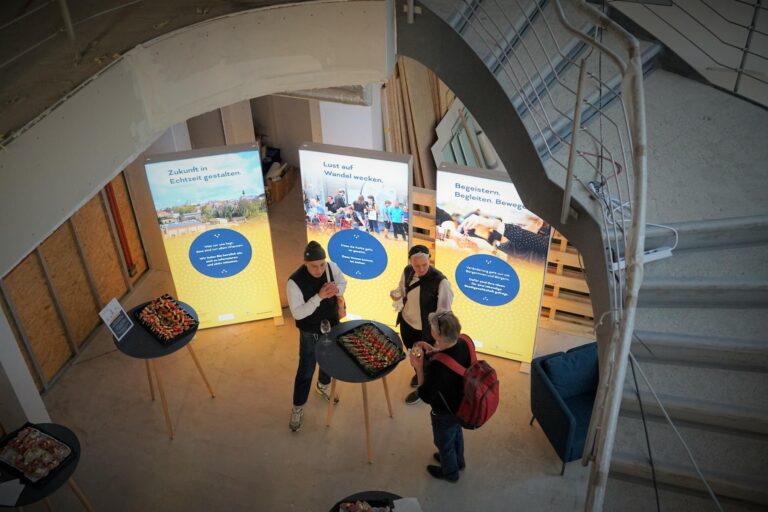
There are 37,000 m² of wasteland on the banks of the White Elster between the train station and the historic old town of Zeitz.
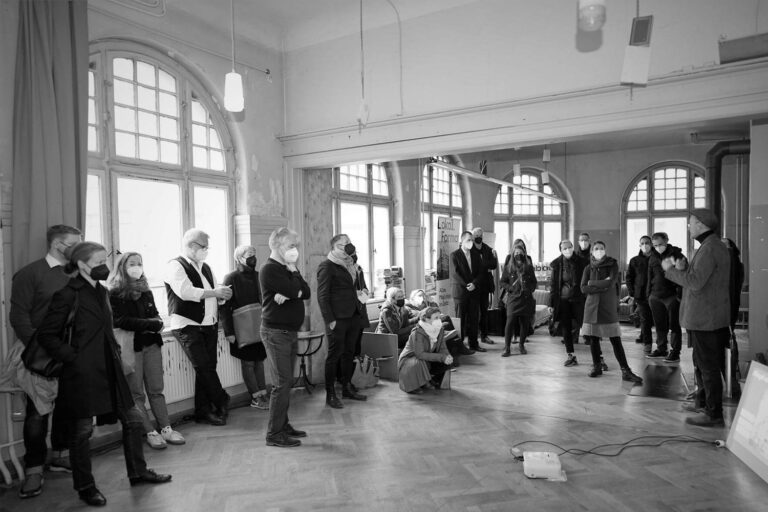
One of the great and exciting tasks of our time is to shape urban and regional structural change in a forward-looking, positive and sustainable way under the sign of the “Green Deal”.
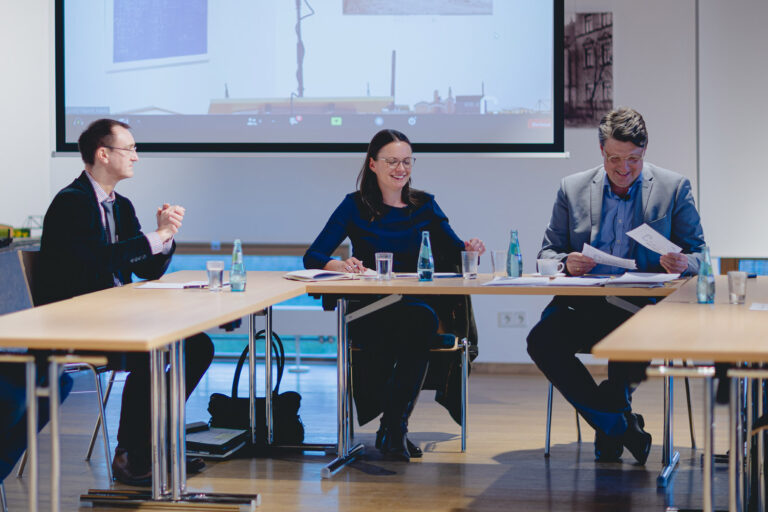
On 23 March 2022, Forum Rathenau hosted the fifth hybrid Carbon Cycle Culture Club (C4). This time, experts discussed the prospects for “sugar as a building material”.

A wide variety of uses for 3D visualizations were presented by the Fraunhofer Institute for Factory Operation and Automation together with Anhalt University of Applied Sciences on March 18, 2022.

In the summer of 2021, the initiators and partners of the Saxony-Anhalt Project met to discuss the initiative of a “New European Bauhaus” (NEB). The first excursion led to Zeitz in the Burgenland district.

© Yanru Chen / Kunsthochschule Burg Giebichenstein

© Florian Merdes & Nea Gumprecht / Kunsthochschule Burg Giebichenstein
In the political, economic and social spheres, but also in climate and energy research, running through scenarios allows orientation with regard to future developments. This technique is a “hypothetical construction of possible futures based on past and present knowledge.” A scenario “stands for the idea of a possible future and thus implicitly always refers to the possibility of further, alternative futures.” (Hannah Kosow and Robert Gaßner)
A set of prototypes will be developed to test suitability, acceptance and implementability. The current could become possible, impossible, distant or not too distant, developments would be made tangible, which can shape a community of the future multidimensionally.
With the development of prototypes and their test implementation on site, the prototypes meet social realities. By this, systemic issues emerge that often limit action and stop change. Issues are such of production, distribution and consumption, digital ethics, ownership and property relations, land and real estate speculation, resource and distributional justice, alternative economies, commons, legal regulations, transparency and surveillance, trust and control, social and spatial policies, identity and gender constructions, etc.
It is not the case that utopian thinking and visionary ideas inevitably break down against realities, but they rub against realities, and this allows, in return, to sharpen them.
All prototypes featured transcend territorial boundaries and show how much economies, ecologies, culture and are already interconnected today. They are created in exchange with experts from the region but also from all over the world.
© Uwe Gaasch / Fraunhofer IBP
We are happy to learn about your ideas or questions for the New European Bauhaus in Saxony-Anhalt.
You need to load content from reCAPTCHA to submit the form. Please note that doing so will share data with third-party providers.
More Information
SALEG Sachsen-Anhaltinische Landesentwicklungsgesellschaft mbH
im Auftrag der Staatskanzlei und Ministerium für Kultur des Landes Sachsen-Anhalt
Stabstelle Strukturwandel im Mitteldeutschen Revier
Turmschanzenstraße 26
39114 Magdeburg
Phone: +49 (0) 391 85033
E-Mail: NEB_FAMILY(at)saleg.de